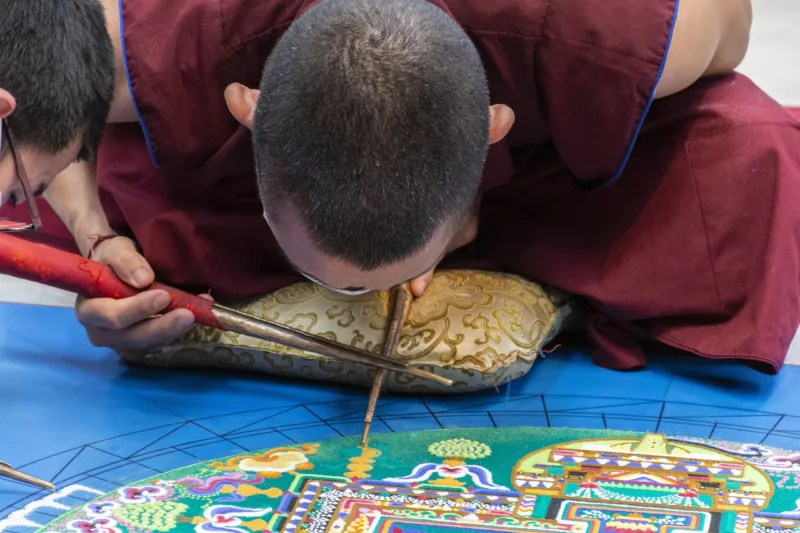Discover the allure of Japanese traditional arts, a realm where culture, aesthetics, and craftsmanship intertwine seamlessly. In this comprehensive guide, we delve into the depth of various art forms, shedding light on their significance and the stories they tell.
The Essence of Japanese Traditional Arts
Japanese Tea Ceremony: A Ritual of Harmony and Tranquility
Embark on a journey through the art of Chanoyu, where every gesture carries meaning. The tea ceremony is not just a beverage preparation; it’s a spiritual experience that embodies harmony, respect, purity, and tranquility.
Ikebana: The Artistry of Japanese Flower Arrangement
Explore the enchanting world of Ikebana, where flowers become a medium of expression. Each arrangement tells a story, capturing the fleeting beauty of nature and the essence of the changing seasons.
Kintsugi: Embracing Imperfection with Golden Seams
Dive into the philosophy of Kintsugi, the art of repairing broken pottery with gold lacquer. Discover how imperfections are celebrated, turning fractured objects into symbols of resilience and beauty.
Noh and Kabuki: Theatrical Extravaganzas of Traditional Performing Arts
Immerse yourself in the captivating world of Noh and Kabuki, traditional Japanese performing arts that blend drama, music, and dance. Unearth the cultural significance and the intricate techniques behind these mesmerizing theatrical forms.
Exploring Japanese Traditional Arts
Origami: Folding Stories into Paper
Delve into the delicate art of Origami, where a simple piece of paper transforms into intricate shapes. Uncover the cultural symbolism behind this ancient practice and its evolution into a global art form.
Ukiyo-e: The Art of Woodblock Printing
Journey through the mesmerizing world of Ukiyo-e, woodblock prints that depict scenes from the “floating world.” Explore the historical context and the enduring influence of these visually stunning masterpieces.
Sumi-e: Japanese Ink Painting
Experience the meditative strokes of Sumi-e, traditional Japanese ink painting. Learn about the profound connection between the artist, brush, and ink, as they create evocative works that capture the spirit of nature.
Japanese Traditional Arts in Modern Times
Bonsai: Cultivating Miniature Masterpieces
Uncover the ancient art of Bonsai, where miniature trees become living sculptures. Explore the techniques of cultivation and the symbolism behind these meticulously crafted arboreal wonders.
Yosegi Zaiku: Intricate Woodwork Puzzles
Discover the precision of Yosegi Zaiku, traditional Japanese marquetry. Explore the art of creating intricate patterns by combining different types of wood, resulting in visually stunning and functional puzzles.
Wagasa: The Elegance of Japanese Umbrella Crafting
Step into the world of Wagasa, traditional Japanese umbrella crafting. Explore the delicate artistry and functionality of these umbrellas, which seamlessly blend tradition with contemporary design.
Japanese Traditional Arts – A Cultural Tapestry
Kimono: Weaving History into Fabric
Explore the timeless elegance of the Kimono, a garment that encapsulates Japanese history and cultural traditions. Unravel the layers of symbolism and craftsmanship woven into every thread of this iconic attire.
FAQs about Japanese Traditional Arts
Q: What is the significance of the tea ceremony in Japanese culture?
A: The tea ceremony holds profound cultural importance, emphasizing harmony, respect, purity, and tranquility. It’s a spiritual practice that fosters a connection between the host, guests, and nature.
Q: How did Ikebana originate?
A: Ikebana has its roots in Buddhist floral offerings. Over centuries, it evolved into a refined art form, emphasizing harmony, balance, and the beauty of nature in floral arrangements.
Q: What does Kintsugi symbolize?
A: Kintsugi symbolizes the beauty of imperfection and the acceptance of flaws. It transforms broken pottery into exquisite pieces, highlighting the value of resilience and embracing life’s scars.
Q: What distinguishes Noh from Kabuki?
A: Noh is known for its slow, deliberate movements and symbolic performances, while Kabuki is a more vibrant and theatrical form with elaborate costumes and dynamic storytelling.
Q: How did Origami become a global phenomenon?
A: Origami’s global popularity grew as a peaceful and meditative art form. Its simplicity and transformative nature appealed to people worldwide, transcending cultural boundaries.
Q: What makes Bonsai a form of living art?
A: Bonsai involves meticulously cultivating and shaping miniature trees, blending horticulture and art. Each Bonsai tree tells a unique story, reflecting the beauty of nature in a confined space.
Similar Articles
Conclusion
In conclusion, Japanese traditional arts are a testament to the nation’s rich cultural heritage. From the simplicity of Origami to the grandeur of Kabuki, each art form contributes to a vibrant tapestry that weaves together tradition and innovation. Explore these arts, immerse yourself in their stories, and witness the timeless beauty that defines Japanese cultural expression.









